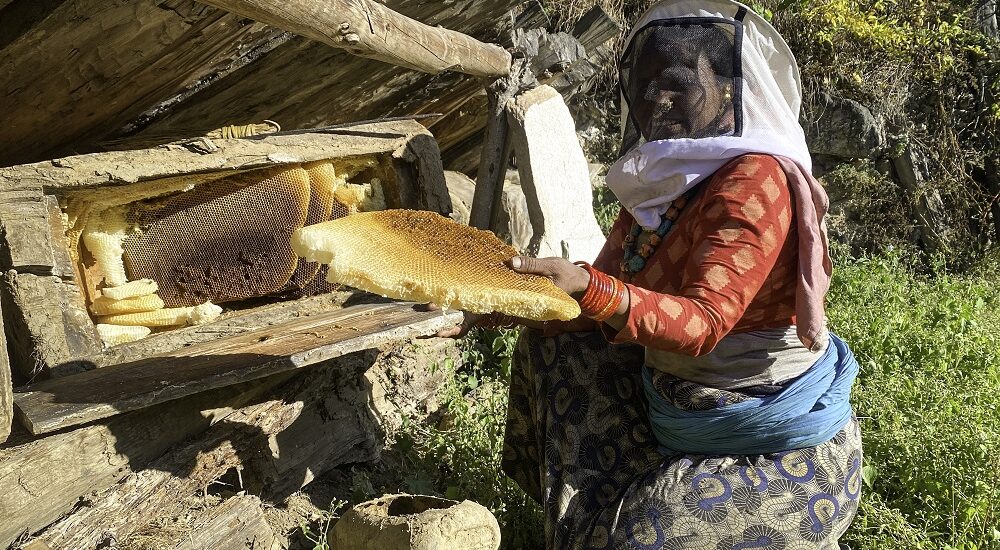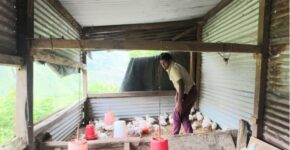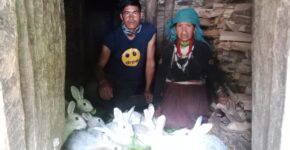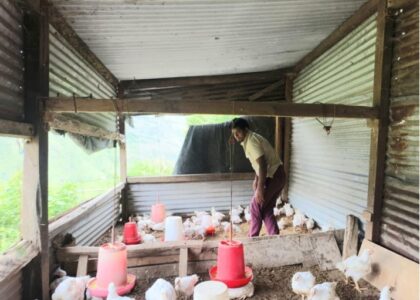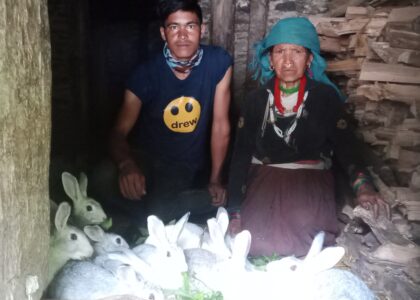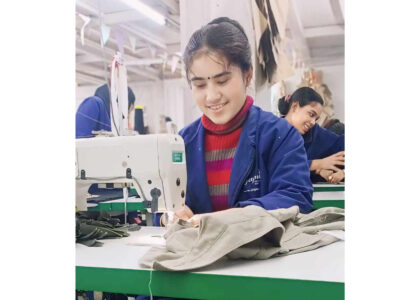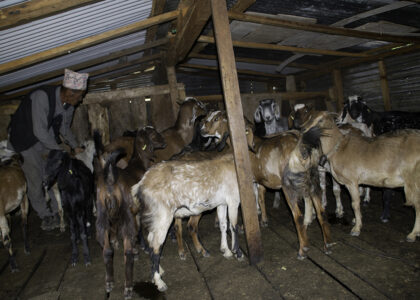At Kankasundari-4 Dhobighat, a signboard can be seen written ‘Dhobighat Beekeeping Pocket Area’. All 15 households are engaged in private beekeeping. Jal Giri Gharti (female, 47 years old) is one of the beekeepers who has the largest number of bee hives. She currently has 25 hives and has experience raising up to 50 hives. “Bees get diseases; as we don’t know much about their disease, the number of hives keeps fluctuating,” she says.
They started beekeeping in the time of their ancestors. She followed and continued beekeeping, learning from the elders in the family. A single hive produces 8–15 kg of honey. Honey is extracted twice a year. The suitable months for extracting honey are June and November. It is difficult to extract by hand. It would have been easy if there was a modern device for extraction, she assumes.
The honey produced in the cool climate of the village is completely pesticide-free. “There is always a good supply of flower and fruit sap around the hive throughout the year, so we never have to feed,” she says. She embraced the profession of beekeeping out of her own desire and is more satisfied with her current business now. She has sold up to two quintals (200kg) of honey in a year. She sells out of the house itself; she has never had to go search for the market till date. She has been selling honey up to Rs. 2500/kg. She, staying at home with her family, earns Rs. 3–4 lakhs a year easily and happily.
Most of the hives she has are old models made of pine wood. The hives are kept on the wood surface under the tin roof to protect it from heat and water. Old hives produce less honey because they are comparatively smaller and more difficult to extract. However, she got an opportunity to participate in commercial beekeeping training under the Srijana Project. After the training, the project supported her with five modern hives and other materials such as hats, gloves, etc. Modern hives prevent bees from stinging, and honey is easy to collect with no waste.
She gets active support from her husband, Nandilal Gharti, in beekeeping. Her dedication and hard work have brought her a good income. With the income, she has been able to easily spend on household expenses and support the educational expenses of four children. Nandilal says, “A person with modern hives, training, and knowledge about bee diseases can easily raise up to 50 hives.”
Jal Gharti is a representative Nepali woman who believes that, with the foreign fascination, the old household businesses are becoming obsolete day by day. By modernizing and organizing the same business with advanced knowledge and training, a livelihood can be created in one’s own village. Being a woman, she has achieved both income and happiness in her own home.
All 15 households in Dhobighat have learned modern beekeeping through the Srijana project, and with the help of the project, all the villages have become self-sufficient. Every beekeeper in a beekeeping pocket area is an example for others. With a little project support, training, and resources, the whole village became aware and took initiative at the local level, and the entire village has become independent locally.


